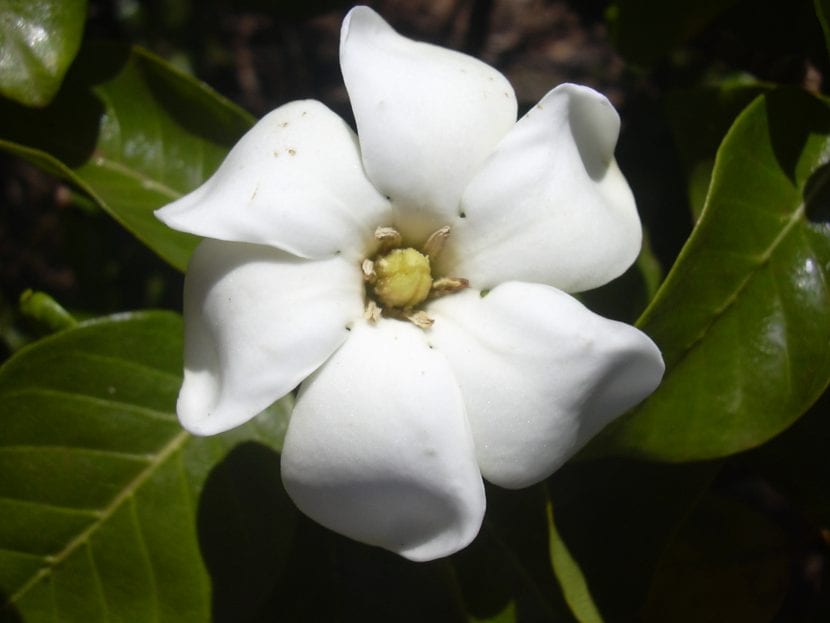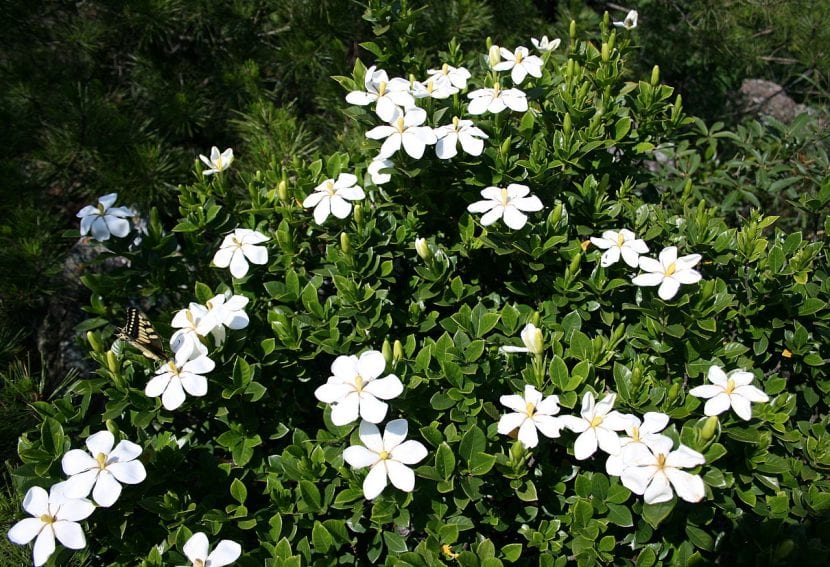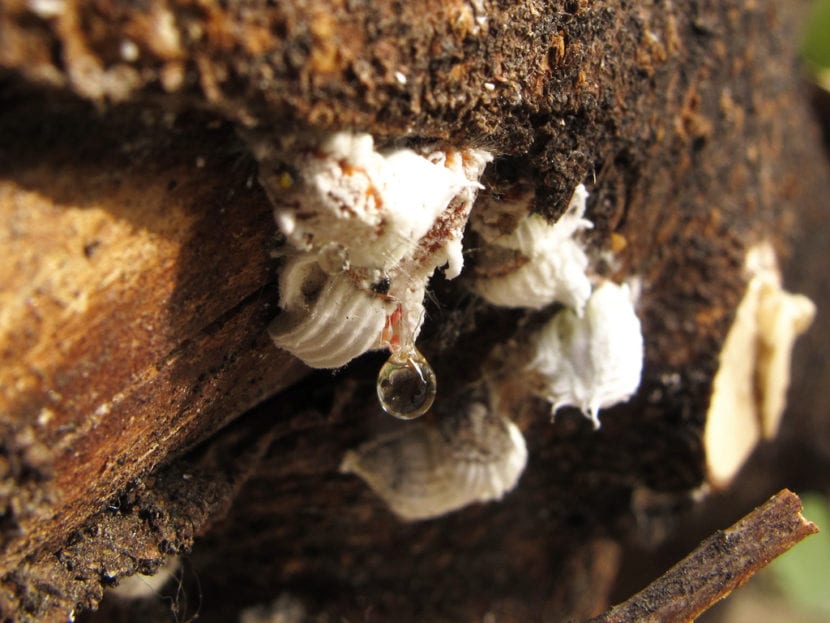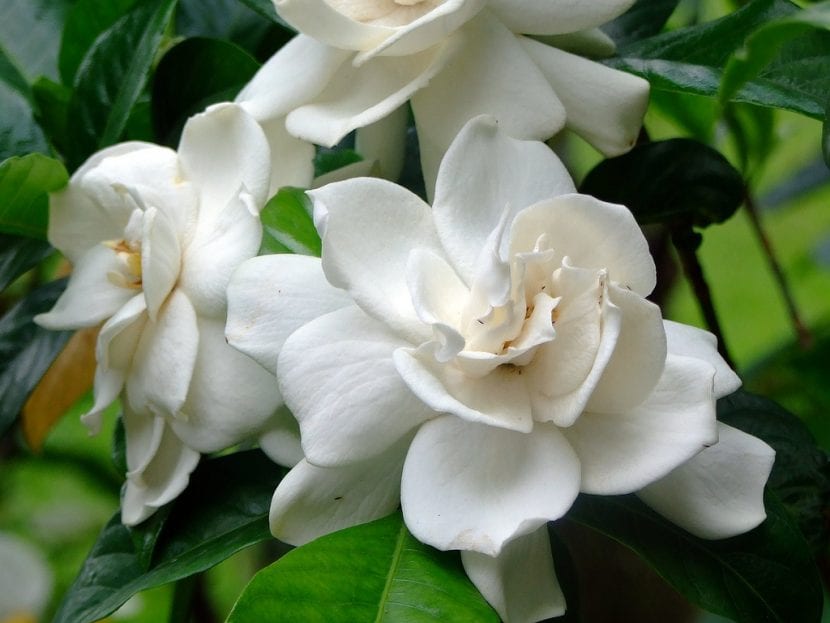
The gardenia is a shrub or tree that grows up to three meters in height and that can be grown throughout its life in pots. Rather slow growing, during spring it produces large, white flowers with a very pleasant aroma.
What are the gardenia care? Whether you want to have a copy or if you have just purchased one, follow our advice to always have it as the first day.
Location

Gardenia is an evergreen plant native to China that has beautiful bright green leaves. Having it on the patio or in the garden is wonderful, because although it may seem otherwise, it is not as difficult to care for as we might think at first 😉. In fact, to have it precious it must be placed in a very bright area but protected from direct sun, because in shade it does not grow well.
Substrate or soil
The substrate or the soil where we want it to grow it has to be acidic, that is, it must have a pH of 4 to 6. If it is higher, that is, if it is neutral or calcareous, the leaves will immediately see that they turn yellow due to the lack of iron and / or magnesium. Therefore, if it is going to be grown in a pot we have to use substrates for acidic plants or akadama, and if it is going to be in the garden it will be necessary to make a hole of 1m x 1m and fill it with substrate for acid plants.
Irrigation
Irrigation water does not have to be lime. If we do not have how to get it, we can dilute the liquid of half a lemon in a liter of water. The frequency of irrigation will vary depending on the weather, the season and the land you have, but usually we will water it three times a week in summer and twice a week the rest of the year.
Subscriber
From spring to late summer we must pay it with a fertilizer for acid plants following the indications specified on the product packaging. Thus, we will ensure that you receive all the nutrients you need, preventing chlorosis.
Plagues and diseases

If we talk about pests and diseases, it can be affected by several:
Pests
- Red spider: they are red mites that feed on the sap of the leaves. You can easily see the cobwebs that weave on the plant. We can combat them with acaricides.
- Cottony mealybug: they settle on the leaves and stems. Since they can be seen with the naked eye (they look like tiny cotton balls), they can be removed with a swab from the ears soaked in water.
- White fly: they are small flies that measure less than 0,5cm. They also feed on the sap of the leaves, causing spots of a light green color to appear.
To eliminate them, it is advisable to use Neem Oil, which is a very effective natural insecticide. - Aphid: it is an insect that perches mainly on flower buds and newer leaves to feed on them. The most effective way to eliminate them is by using a Chlorpyrifos insecticide.
Management
- Botrytis: it is a fungus that mainly affects the leaves, which will begin to have a gray powder similar to mold, which is why it is known as the gray mold fungus. It is treated with spray fungicides, avoiding wetting the plant when watering and spacing the waterings.
- Powdery mildewPowdery mildew is a fungus known as cinderella or cinderella that affects the leaves, where whitish spots will appear. We can treat it by diluting half a liter of skimmed milk in 8l of water and spraying the leaves with this solution.
Planting or transplanting time
Gardenia is a slow-growing plant that it has to be moved to its final location or to a larger pot during spring, when the risk of frost has passed. This will make it much easier for you to adapt to your new location.
Rusticity

It can withstand the cold without problems, but frosts of -2ºC or more can seriously harm you, so if we live in a colder area we have to protect it with greenhouse plastic or indoors until the good weather returns.
With these tips, our gardenia is sure to bloom year after year 🙂.
FOR me personally it is my hobie at 1000% I love clean and green nature all the plants I love and they get prettier in the spring that relief infects all the plants that God continues to give us water, oxygen, light and life to continue living all that he gives us every day. Congratulations and many blessings …… ..Tony.
My gardenia had brown leaves, is it drying out? scrape the stems and they are green but this spring did not give me any flowers and as I said before the leaves are dry
Hello Mauricio.
What type of water do you use to irrigate? Do you have it in the sun or in the shade?
It is important to water it with soft water, and keep it in semi-shade (it burns in direct sun).
En this article you can tell if it is overwatering, or if on the contrary it lacks water.
Greetings.